The FieldLab analyzer from Spectro Scientific is a battery-driven, integrated oil analysis system that offers comprehensive and quick oil analysis in the field.
FieldLab Series Portable Oil Analysis System
Video Credit: AMETEK Spectro Scientific
Commercial field service personnel who handle fleets of high-value assets require lightweight, portable devices that deliver quick oil analysis results with quality comparable to oil analysis laboratories.
The FieldLab C Series was funded by the United States Department of Defense (DoD) and commercialized by Spectro Scientific. This state-of-the-art military technology is currently available for commercial application.
The FieldLab C Series integrated system only requires a few milliliters of oil to finish four comprehensive tests to help preserve the readiness of critical assets while keeping maintenance costs low.
Easy to Use
- Integrated video instruction for inexperienced users
- Intuitive interface and straightforward workflow reduce human error
- Solvents or reagents and small sample volumes are not necessary
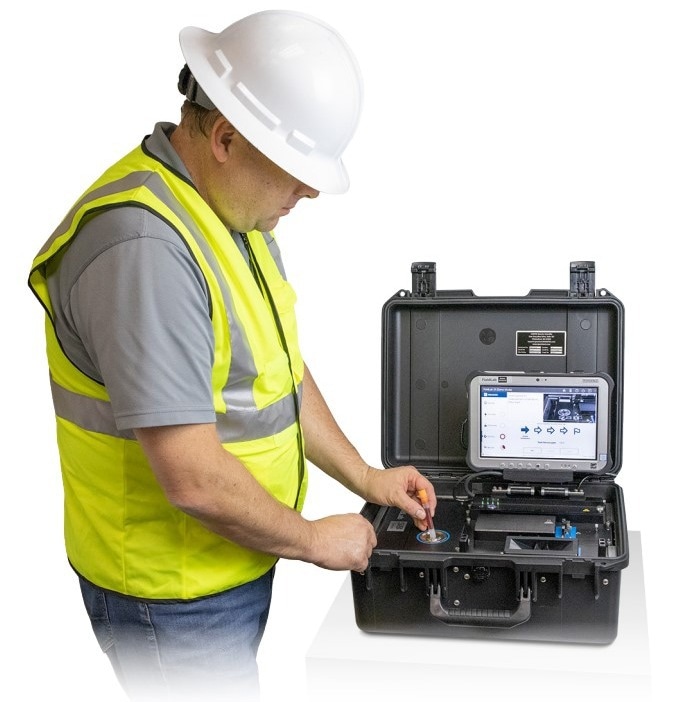
Image Credit: AMETEK Spectro Scientific
Key Features
- Solvents or chemicals are not required
- Sturdy design with battery power for on-site field use
- Detailed oil analysis lab with four technologies combined into a small case:
- Filter Particle Quantifier (FPQ) pore blockage particle counter
- X-Ray Florescence (XRF) spectrometer for elemental analysis
- Kinematic viscometer (40 °C)
- Infrared (IR) spectrometer
- Integrated controller for data, measurement, and asset with a touchscreen interface
- Four tests produce over 20 oil analysis parameters in under 10 minutes
- ASTM compliant
- Only 12 ml of oil is required
Smart Diagnostics, Flexible Alarm Setting
- Simple to read oil analysis reports with clear observations, diagnostics, and suggested actions
- Factory alarm limit tables for standard components
- User-customizable alarm limits and diagnostic sets for constant enhancement over time
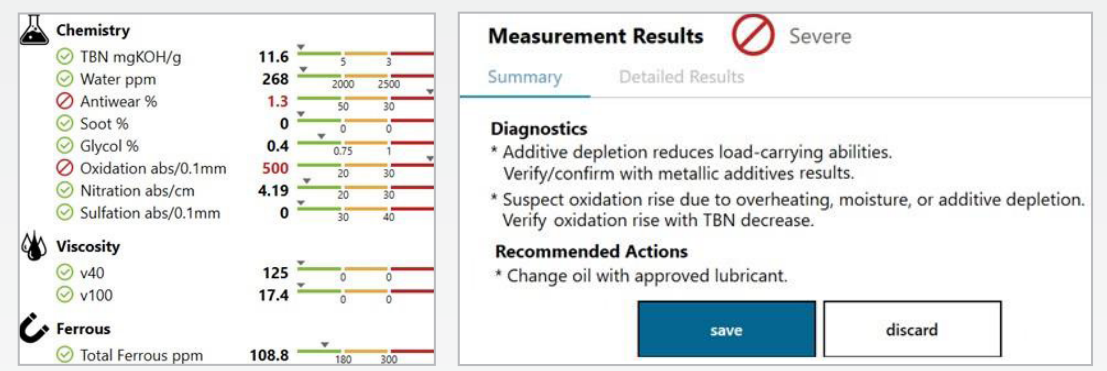
Image Credit: AMETEK Spectro Scientific
Optional Interface With TruVu 360 Fluid Intelligence Software
- Management dashboard for CBM oil-analysis program management views of cost reduction and program key performance indicators (KPIs)
- Summary dashboards for visibility into fleet readiness and asset condition
Key Parameters

Image Credit: AMETEK Spectro Scientific
Principles of Operation
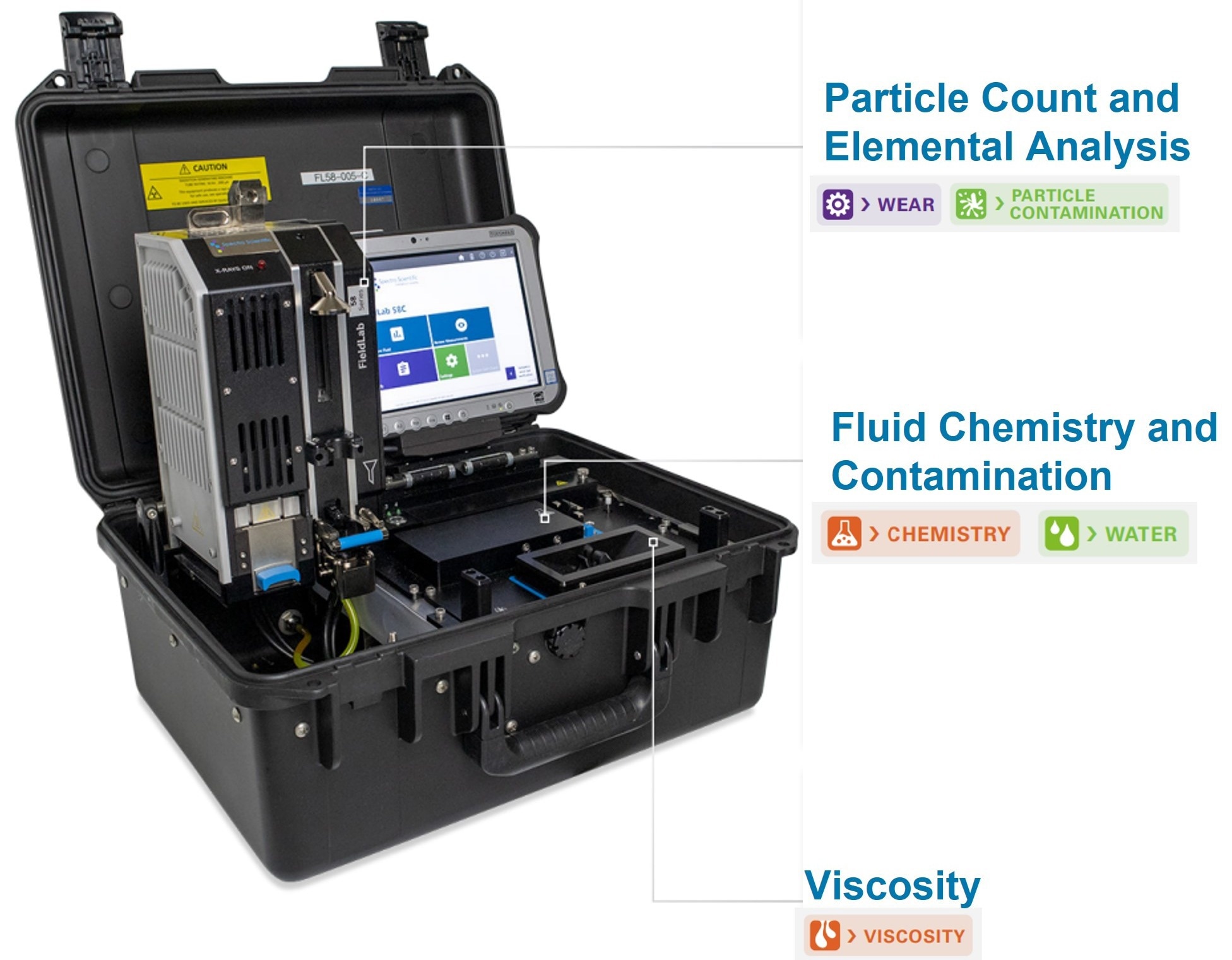
Image Credit: AMETEK Spectro Scientific
Particle Count and Elemental Analysis — ASTM D812
Particle counts are produced using Spectro Scientific’s patented FPQ pore blockage particle counter (ISO 21018-3).
It captures the particles of interest for extreme wear detection onto a unique filtergram. This debris can then be measured on the related XRF spectrometer for instant results in ppm for up to 16 elements.
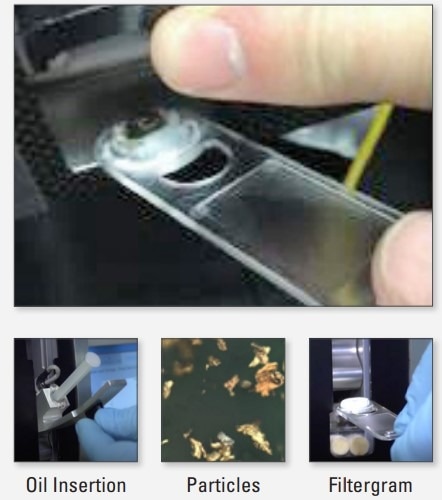
Image Credit: AMETEK Spectro Scientific
Wear and contamination particles bigger than 4 microns that are placed on the filtergram are tested using an X-Ray Fluorescence (XRF) spectrometer. The concentration (in ppm) for up to 16 different elements is reported.
The filtergram coupon can be stored for future examination, such as microscopic wear debris examination of particle shapes and colors.
Fluid Chemistry and Contamination — ASTM D7889
The IR spectrometer assesses the chemistry of the lubricant and contamination in one minute. It uses only a single drop of oil and requires no solvents or chemicals. It integrates ruggedness, ease of use, and lab precision in a compact package, which is suitable for field use.

Image Credit: AMETEK Spectro Scientific
The oil condition parameters measured by FluidScan include oxidation, sulfation, nitration, Total Base Number (TBN), anti-wear additive, soot, water, and glycol for engine oil; and oxidation, water, and Total Acid Number (TAN), for rotating machine lubricants such as gear oil, hydraulic oil, and transmission oil.
Viscosity — ASTM D8092
Viscosity is measured using a temperature-controlled kinematic viscometer with a patented split-cell design.
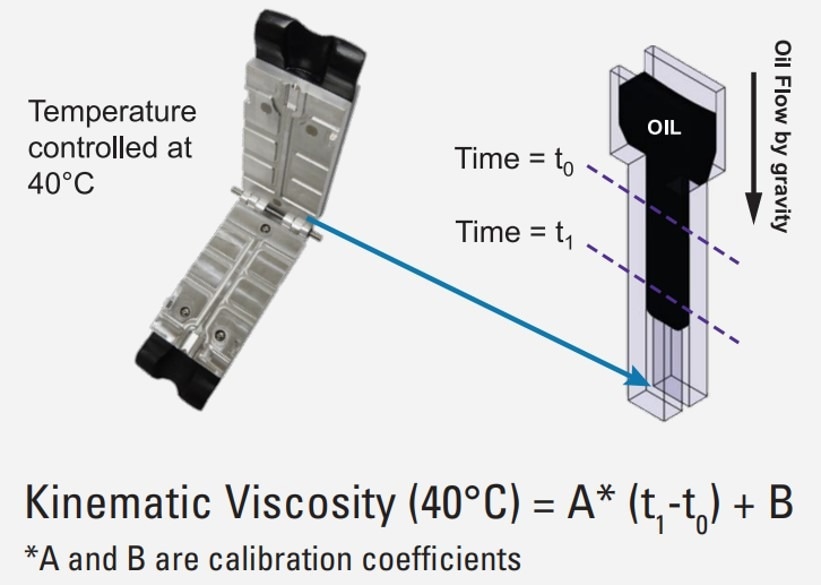
Image Credit: AMETEK Spectro Scientific
A funnel with a 100-micron gap is formed in the cell's center. Optical sensors in the cell detect the flow of oil under the influence of gravity.
The time it takes the oil to flow through the cell is proportional to the viscosity of the oil. When open, the cells can be cleaned using a non-abrasive wipe. No solvents are required.
FieldLab C Series Models
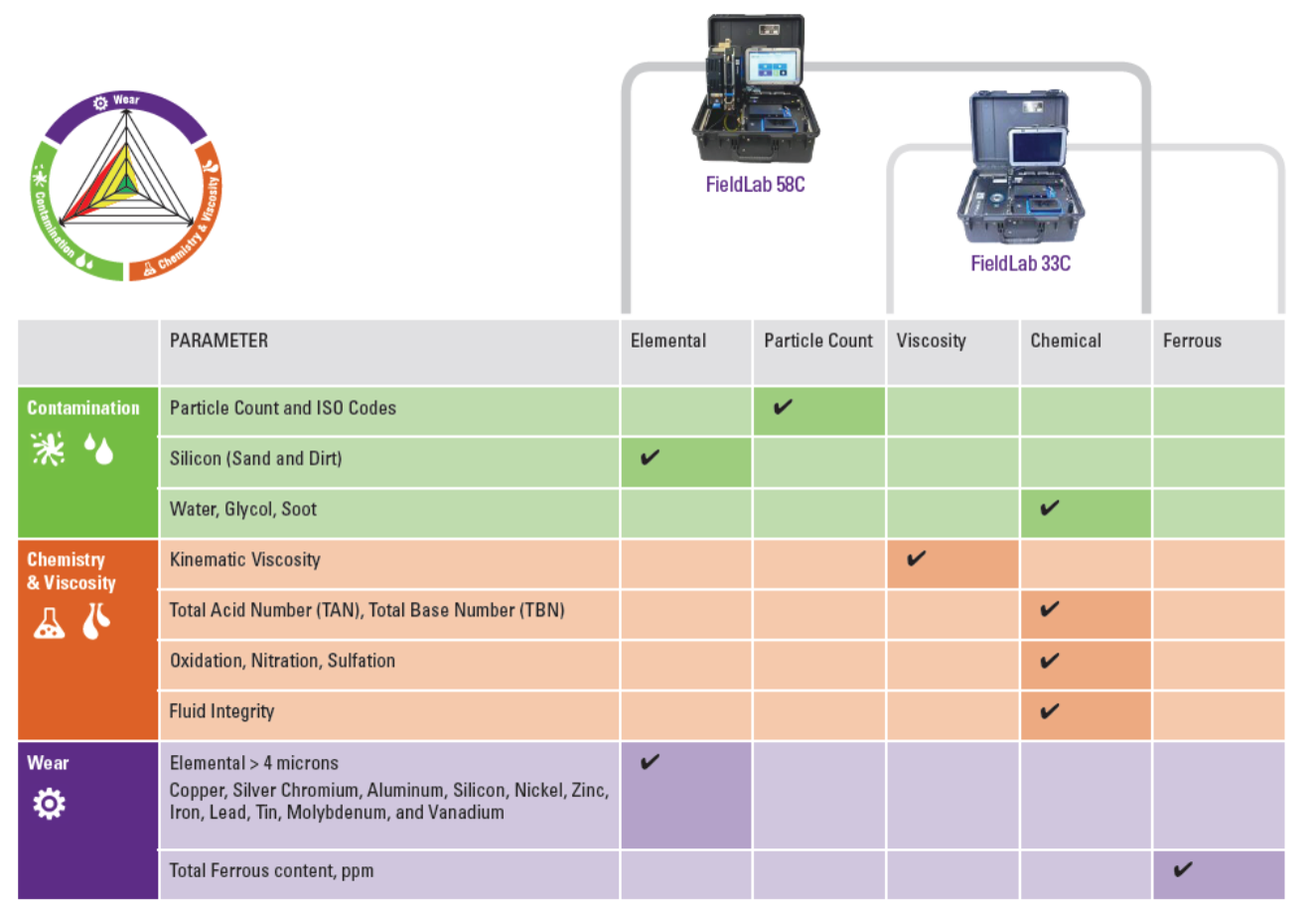
Image Credit: AMETEK Spectro Scientific